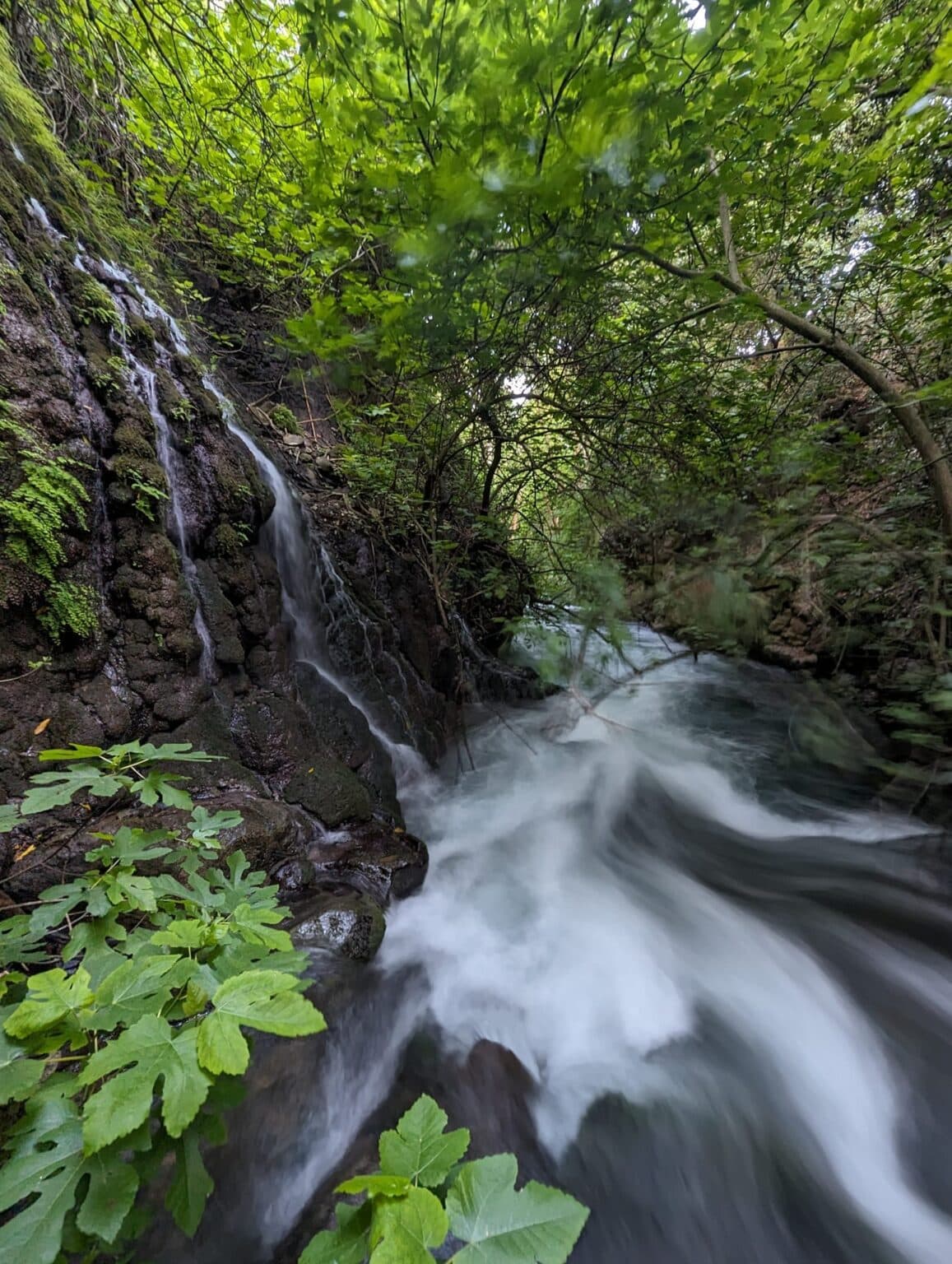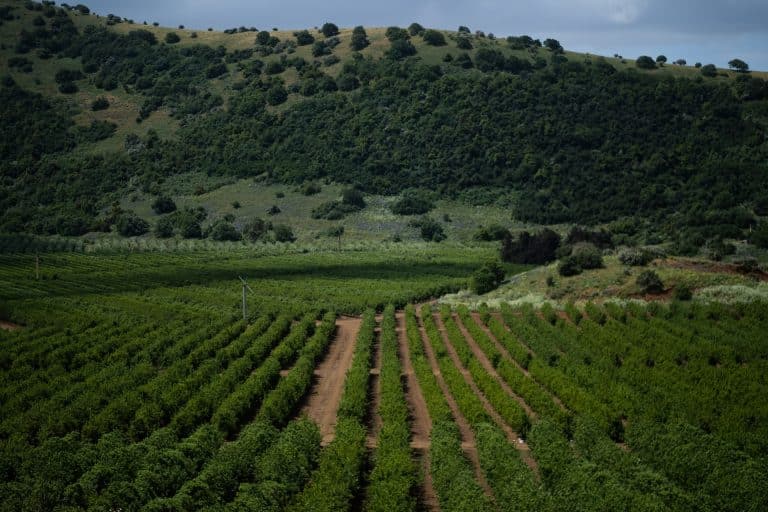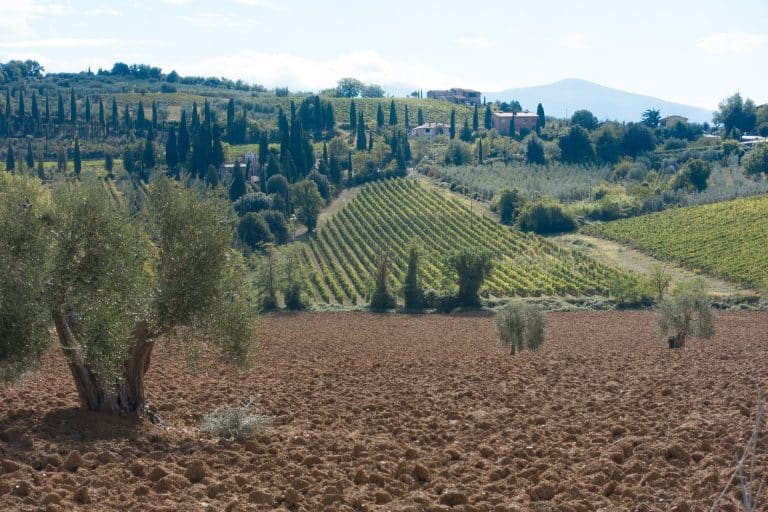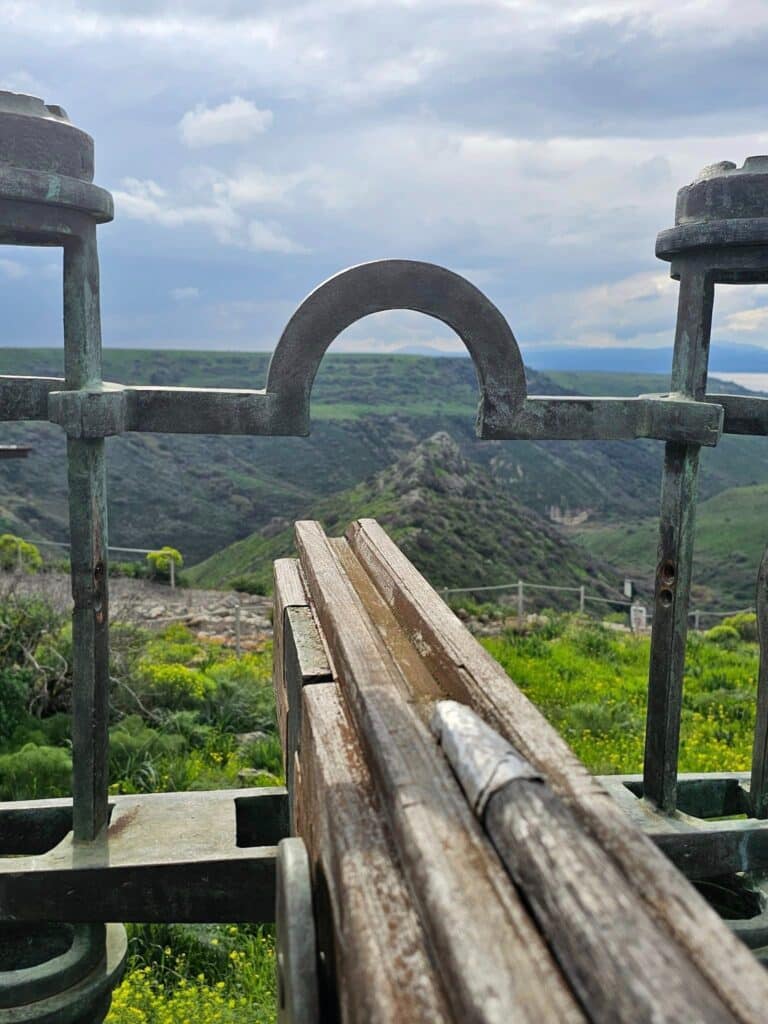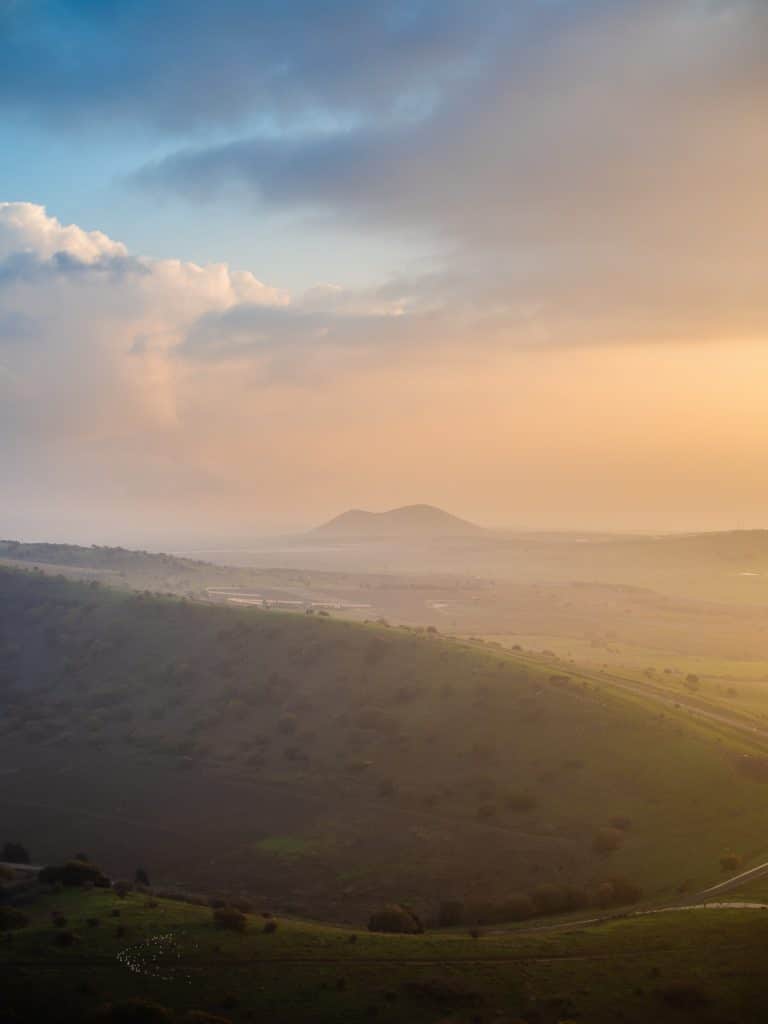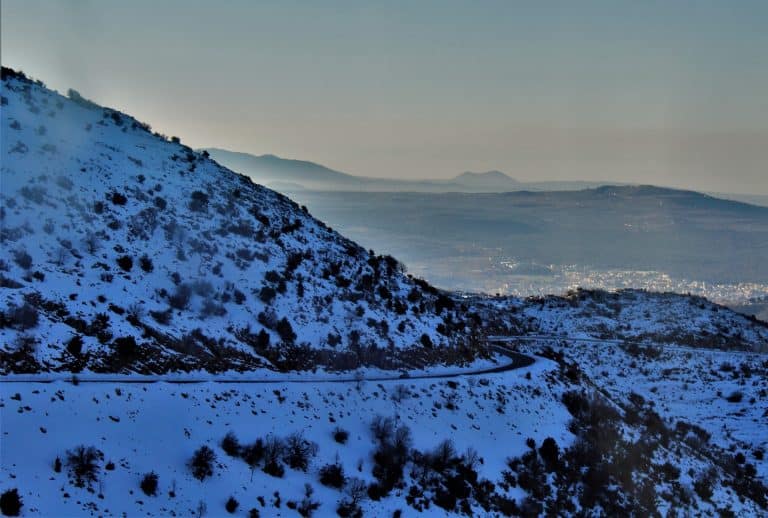The Banias River, a short, 9-kilometer/5.6-mile river that flows from the foothills of Mount Hermon to the Beginning of the Jordan River, is one of the most impressive and popular rivers in all of Israel. As an incredibly powerful river, with diverse vegetation, turquoise pools, and waterfalls, as well as interesting historical sites, the Banias really has all you could ask for, in one small and charming nature reserve.
The name origin of Banias
The origin of the name Banias is coming from a local Greek legend, which tells about the Greek god Pan, the god of shepherds and nature, who traveled in the area and caused panic among the animals and fairies of the forest. When the Greek Hellenists settled in the area they named their city Paneas, which was built right here, after him. About a thousand years later, when the Muslims arrived here, the name of the city became Banias. The city of Paneas/Banias had existed here for 2,000 years, until the Six-Day War of 1967, and today you can visit its ancient ruins.
Important things to know about visiting the Nature Reserve
– Entrance fee:
Adults: 28 ILS
Kids: 14 ILS
– Bathing in the river’s water is strictly prohibited.
Best places to visit in Banias
Banias Fall
The Banias Fall is the waterfall with the strongest flow in Israel – it falls with tremendous force and noise from a height of about 10 m/30 feet into a beautiful pool surrounded by vegetation.
You can look out over the waterfall with the sound of the flowing water and the spectacular view from the convenient wooden balcony that was built next to it.
The way to the Banias Fall Passes through an impressive section of the river, where you can walk inside the narrow canyon, between upright basalt walls and riverside vegetation alongside the powerful flow of the stream.
The Syrian Tank
A Syrian tank that has been stuck upside down alongside the Banias River during the Six-Day War of 1967, and has remained in place ever since. During the war, the Syrians tried to occupy this region, but after a hard fight the army retreated and the tanks escaped. It is not entirely clear how the tank got stuck here. Some say that it lost control, went backwards, and found itself overturning and falling straight into the riverbed. Another version says that the tank was standing at the edge of a cliff that disintegrated and therefore it fell down to the river.
The Holy Cave
Remains of a temple built by King Herod in honor of Pan. The impressive temple is built of white stone and is dedicated to this influential Greek god. The temples are located right near the Banias Spring.
In addition, in this place, you can also see five holes carved into the cliff next to the cave, which are a remnant of a temple built by the Greeks in the second century BC in honor of Pan. According to Greek tradition, Pan lived in the caves here, which is why his worship was concentrated in the caves.
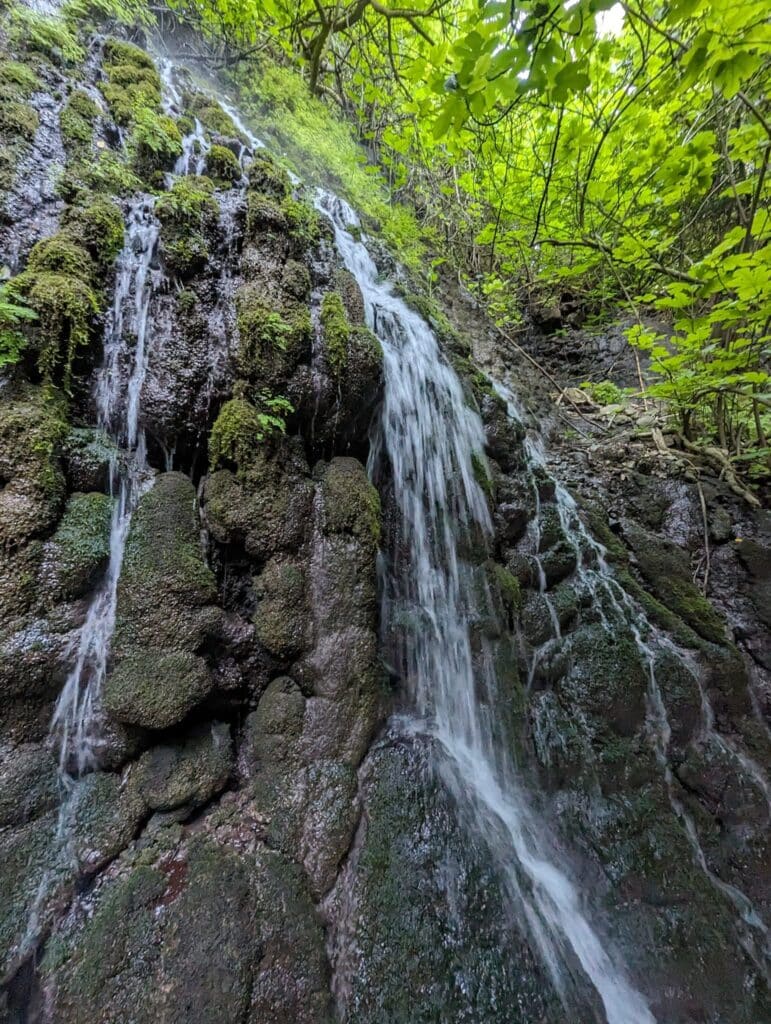
Best hikes in Banias
Banias fall
A simple out-and-back route, in which you can go down to the Banias Fall and enjoy a walk on a long “hanging” trail, built over the river, that gets very close to the waterfall. At its peak, after rainy days, the intensity of the flow is so strong that you will feel the drops of the waterfall reaching all the way to the waterfall viewpoint. This track goes against the direction of the water flow, which will make you experience the powerful river flow to its fullest.
The Banias Fall parking lot is located next to Kibbutz Snir. From Here, go down the trail between the oak trees with a view of Mount Hermon, until you will reach the hanging trail, which is 80 meters/262 feet long. Then, after the Banias Fall viewpoint, go back to the parking lot.
From Banias Springs to the Syrian Tank
A 7-kilometer/4.3-mile out-and-back hike, that starts from the Banias Springs parking lot, and goes through some of the reserve’s best attractions, including the Holy Cave, the ruins of the city of Paneas, the Banias Fall, and the Syrian Tank.
The hiking trail goes southwest, on a blue-marked path, and a few minutes later passes under the remains of an ancient bridge from the Roman period, which is adjacent to a modern bridge that crosses Route 99. Here we will cross the riverbed on top of a bridge, as we will do several more times on the route.
After a few minutes, we will reach two old buildings: the first was used as a hydroelectric station to generate electricity using the strong flow energy of the river. The second is a flour mill, which was active until 1967 and today presents a reconstruction of the traditional factory.
From here, we’ll continue on the way, and soon we will reach a fork in the path, in which our route turns to the right and crosses the river again.
At this junction, you can take a short detour and turn left for a short tour of the antiquities of the city of Paneas, where there are ruins from many different periods of time, including the Hellenistic period, the Roman period, and more.
Regardless, from this junction, we will turn right with the blue-marked path, and we will pass by Ein Khilo – a spring that flows at a relatively warm temperature straight into an old wading pool that was active until 1967. Today, the pool is used as a habitat for fish and invertebrates thanks to the unique temperature and composition of the water.
Shortly after Ein Khilo, we will cross the riverbed again towards the south-eastern bank, where we will walk for the next few minutes. This is a particularly impressive section in the trail, where you can see the flowing stream, huge oleander trees, and sometimes quite a few crabs and other small animals in the river. In the summer and early autumn, this section is a boon for fruits lovers, as you can eat ripe juicy figs right the trees, pick clusters of grapes that swing from the vines, and enjoy the taste of the red raspberries along the river.
In this part, we are walking on a moderate upward trend, which takes us out of the stream towards the flat area above it, where we can notice the remains of two more flour mills. Here, we leave the completely shaded area, and then, the path descends back to the stream channel in a series of wooden steps, that end in a bridge that crosses the river.
After the bridge, we’ll reach another trail junction: the blue path turns right to the waterfall and goes up to the parking lot above it, while the red path turns left towards the “hanging” trail. We will turn right to the blue path and after about 200 meters we will reach a wooden balcony overlooking the Banias waterfall.
From the waterfall, we will return to the junction of the blue and red paths where we were before. From the hanging path, we will continue on the black-marked path down the stream. After about 200 meters/650 feet, we will reach a one-way gate, where we will leave the paid nature reserve area.
The path here passes inside the river channel but at a considerable height above the water. After about 700 meters/2,300 feet, we will reach a sign pointing us to the “Syrian tank”, leading to a turn to small path that descends into the stream bed. We will go down it carefully – the path is very narrow and a little steep – and after three minutes we will reach the river bed, with the crazy scene of an upside-down tank lying peacefully in the cold water.
From the platform of the tank, we will ascend back to the black path, and then return the same way to the parking lot.

